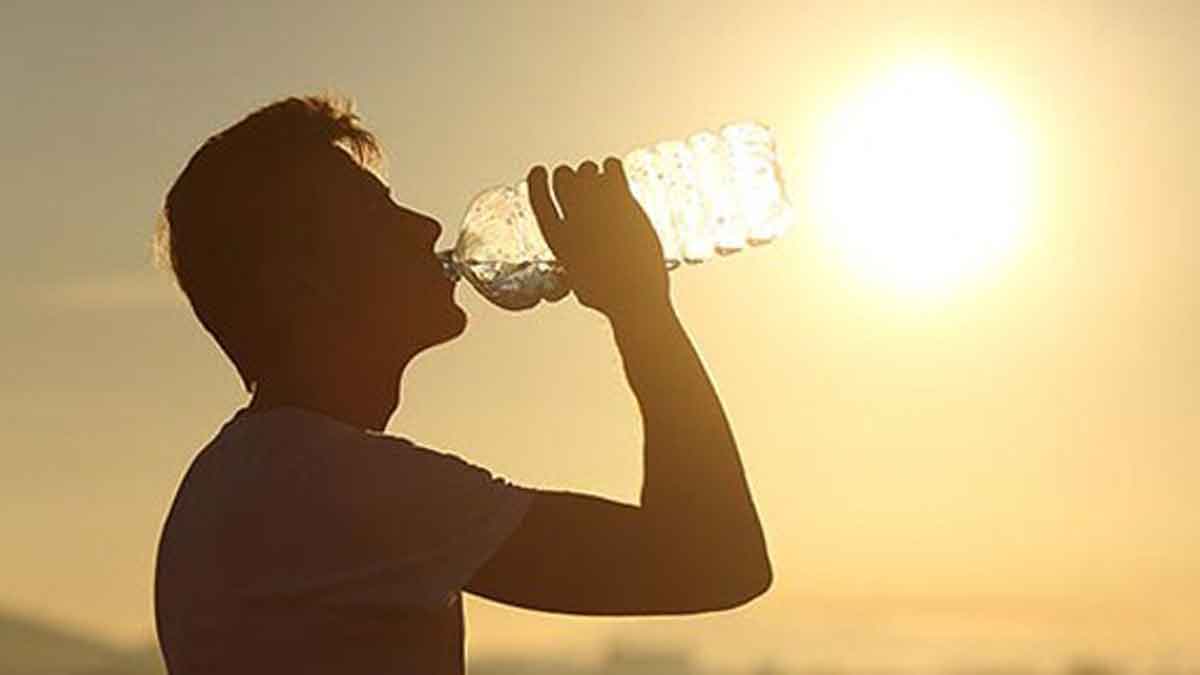Dehydration and electrolyte imbalance: How to stay hydrated, maintain mineral balance
 Representative Image
Representative Image
Hydration involves a careful balance between water consumption and electrolyte management because electrolytes and fluids need to reach a specific ratio in the body. Both dehydration and electrolyte imbalance impact all groups of people who engage in physical activity, and medical issues become severe when these conditions go unaddressed.
Understanding hydration and electrolytes
All bodily operations depend on water which performs essential duties throughout the body while performing functions like temperature control, joint lubrication and waste removal. Nerve function regulation as well as muscle contraction together with pH balance and fluid cell transportation require five electrolytes: Sodium (Na⁺) alongside Potassium (K⁺) and Calcium (Ca²⁺) and also Magnesium (Mg²⁺) with Chloride (Cl⁻).
Imbalance causes
A decline of fluid occurs from insufficient water intake as well as heavy perspiration alongside high temperatures above 38.3 degrees Celsius and vomiting, diarrhoea and diuretic use. The human body suffers from reduced attention capacity and lowered energy output despite minimal signs of dehydration. Electrolyte depletion appears with fluid loss mainly because vomiting and diarrhoea cause hypokalemia alongside hyponatremia conditions. The severity of the imbalance becomes worse when patients have kidney disease and diabetes insipidus and specific medications in their care.
Recognising the symptoms
Primary dehydration indicators include dry mouth combined with fatigue together with dizziness followed by dark-coloured urine. Hypovolemic shock is the most severe outcome which can result from dehydration while rapid heartbeat together with confusion and hypotension fall under more dangerous symptoms. Serious electrolyte disturbances can result in muscle cramps, physical weakness, arrhythmias, paresthesia symptoms and seizures or changed mental states.
How dehydration is diagnosed
Healthcare professionals measure sodium and potassium levels among other minerals by performing serum electrolyte panels. The BUN test combined with creatinine evaluation provides clinical insights into kidney operations and fluid equilibrium. Two tests that help reveal hydration levels include urine-specific gravity and plasma osmolality.
Staying ahead of the curve: Prevention tips
In a day, one needs to consume 2-3 litres of fluid to stay hydrated together with electrolyte balance maintenance along with climate and activity adjustments. Sipping water regularly, not just when one feels thirsty. The human body needs electrolyte-rich foods stemming from these ingredients: bananas together with spinach and yoghurt. There should be usage of oral rehydration solutions or electrolyte drinks to support fluid and mineral levels.
Treatment options
The recovery of mild dehydration occurs through increased fluid consumption through the mouth while maintaining balanced food intake. When moderate to severe vomiting or diarrhea exists alongside symptoms patients require either ORT (Oral Rehydration Therapy) procedures or infusions of intravenous fluids for treatment. Medical professionals choose isotonic solutions from both 0.9% sodium chloride and lactated Ringer's solution for patient care.
The treatment of particular electrolyte disturbances includes supplementing potassium chloride tablets for hypokalemia patients and restricting fluid intake for those with hyponatremia.
Conclusion
One needs to see a doctor right away if diarrhoea persists alongside confusion or cramps or if the urine output appears low since it can indicate serious dehydration problems or an imbalance of electrolytes. Medical help should be sought immediately since timely intervention blocks complications that could result in seizures or kidney damage.
The author, Dr. Rajmadhangi D., MBBS, MD (General Medicine), is with Apollo Spectra Hospital, Chennai
Health